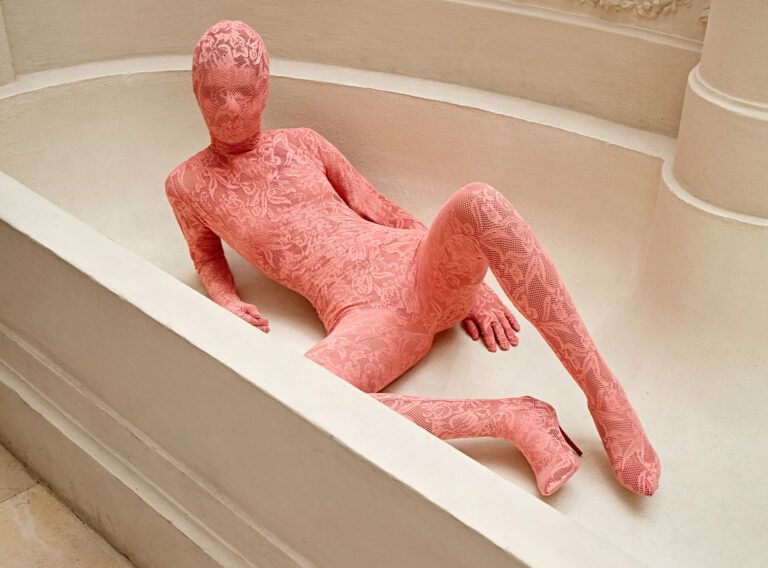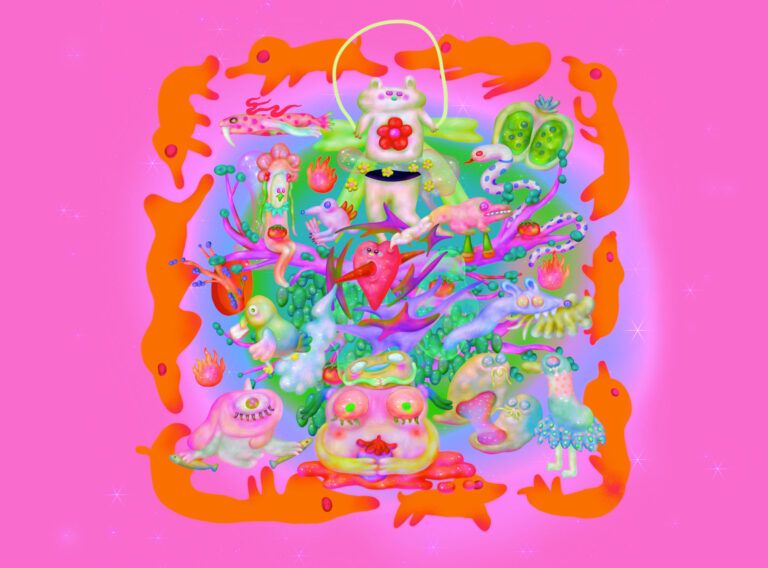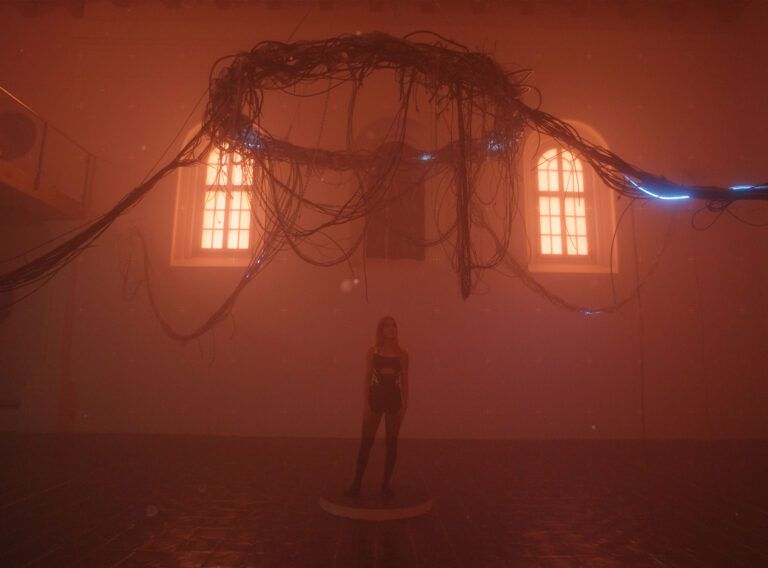Embroidery in Glass
The most honest language is body language. Lies are often disclosed by body language. I am interested in the words truth and lie. The school teachers taught us that lying is bad, and saying the truth is good. A lot of people took to this idea completely, carrying the imagination of a black and white world. What if the meaning of truth is connected with a point of view? Does the truth and lie have their own concepts? If you walk around my installation, the picture starts to change. The final picture depends on your point of view. I am giving the audience a choice of truth.



Ceramic Masks
I believe that at the beginning of our lives we have our faces. Over time, we face manipulation. My first experience with manipulation were kindergarten photo-shoots. The photographer built one scenery for girls and one for boys. I had to stay by the table with a giant Christmas Cactus and hold an ugly socialistic doll. I didn’t like it and I wanted a different scenery, but I didn’t have the option. The worst thing was that I had to smile. The photographer told me: if you smile, you will make your parents happy. I was the only kid who started crying. This is the beginning: you have to, you should. I believe that each of us has a personal set of masks for daily use. Most people change masks more often than their underwear. Do you remember a picture of your real face or have you already lost it?



Sum up the main character of your work – your long-term interests and themes.
The main, long term leitmotif of my works are identity and tradition. My parents are foreigners and I was born and grew up in a different country than they did. I couldn’t learn their tradition and history. Instead, I had to learn the Czech ones, but still, after many years, I face many misunderstandings. I see these misunderstandings differently and the term I use for them is “a different point of view”. In my works it can be understood partly as authenticity and partly as errors. That’s why I am very interested in contrasts vs. similarities. I don’t work on the individual artworks but on the sets of the works. At the beginning there is the idea, and then I look for the most fitting form. I seek the perfect balance between the message and a quality handicraft technique


Describe the context of your work – what are your inspirational sources and theoretical starting points, which artists and tendencies do you consider as referential to your work?
There are more sources of inspiration in my work. One part is from everyday life, the other part is based on observation of events that surround me. The big source for my texts are stories that other people tell me. As a result, I combine these sources. The sourcebook for my ornamental embroideries in glass from the set Inner Feeling is The Grammar of Ornament by Owen Jones. As references I consider Czech artists Adriena Šimotová and Inez Tuschnerová, from abroad it’s Severija Inčirauskaitė-Kriaunevičienė or the installation Horizontal Darkness in Search of Solidarity by Oscar Murillo and the dirty corporeal mysteries by Louise Bourgeois. They´re all storytellers and they all deal with topics like cultural context or identity in their work, reflecting their conceptual message in a strong and unique handicraft technique. There´s a strong similarity in the way they depict the mysteries of human nature and bodily symbols.



Try to characterize what makes your work specific, wherein lies its force, which makes it different from the work of artists with similar approaches and themes.
I differ from other intermedia artists in approach to individual works. I don’t see any of my work like a completed unit. I see all of my works like one big artwork which is slowly growing. I mark individual works with a numerical series and include them in the collective name for the file. I don’t believe in the sentence either: It is not possible. I think this is my strength. I don’t give up easily and that’s why I found the possibility of overstepping the border of the glass. My weakness is that my works take a long time to make, and it means I don’t make as many works as other artists around me.

What is your work process like? Do you deal with preparation and research? How do you search for your themes? How do you choose the media you work in?
My works are a reaction to the current global situation. I deal with topics intuitively. Nowadays I focus mostly on social seclusion and I have been working with the topic of identity for a long time. I process every topic through sets of artworks. Sometimes it took a couple of years. For each message, I try to find the best form. That’s why I work with different kinds of media. For a long time I have been collecting handicraft techniques and I try to move them to the current context. I collect the techniques based on the recommendation of old generations, and I am also looking for them in antiquarians and libraries. For me personally it is important to use recycled material, which others throw in the trash. I am a protagonist of a slow lifestyle, and environmental responsibility is part of it.






